David M. Reiman
Fully probabilistic quasar continua predictions near Lyman-α with conditional neural spline flows
Jun 02, 2020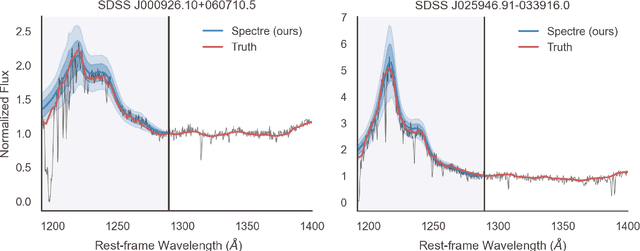

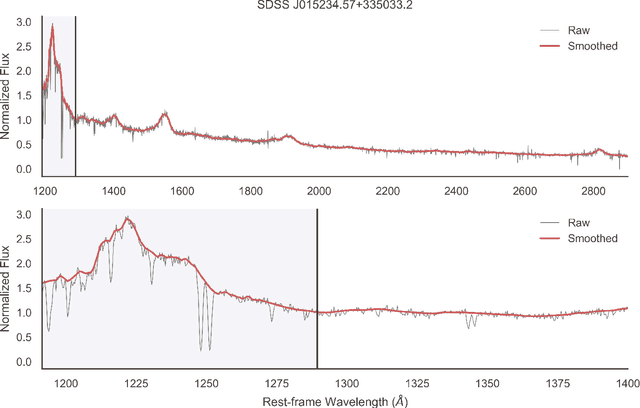
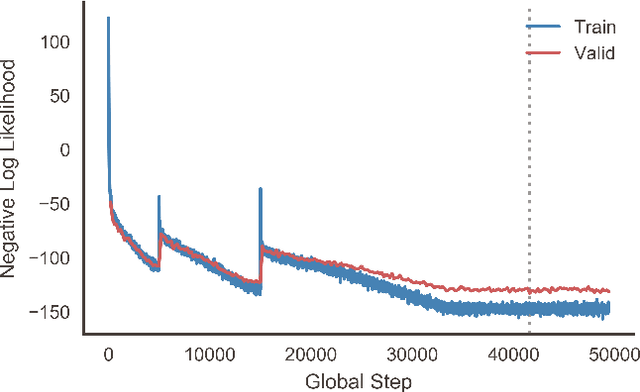
Abstract:Measurement of the red damping wing of neutral hydrogen in quasar spectra provides a probe of the epoch of reionization in the early Universe. Such quantification requires precise and unbiased estimates of the intrinsic continua near Lyman-$\alpha$ (Ly$\alpha$), a challenging task given the highly variable Ly$\alpha$ emission profiles of quasars. Here, we introduce a fully probabilistic approach to intrinsic continua prediction. We frame the problem as a conditional density estimation task and explicitly model the distribution over plausible blue-side continua ($1190\ \unicode{xC5} \leq \lambda_{\text{rest}} < 1290\ \unicode{xC5}$) conditional on the red-side spectrum ($1290\ \unicode{xC5} \leq \lambda_{\text{rest}} < 2900\ \unicode{xC5}$) using normalizing flows. Our approach achieves state-of-the-art precision and accuracy, allows for sampling one thousand plausible continua in less than a tenth of a second, and can natively provide confidence intervals on the blue-side continua via Monte Carlo sampling. We measure the damping wing effect in two $z>7$ quasars and estimate the volume-averaged neutral fraction of hydrogen from each, finding $\bar{x}_\text{HI}=0.304 \pm 0.042$ for ULAS J1120+0641 ($z=7.09$) and $\bar{x}_\text{HI}=0.384 \pm 0.133$ for ULAS J1342+0928 ($z=7.54$).
Deblending galaxy superpositions with branched generative adversarial networks
Oct 23, 2018

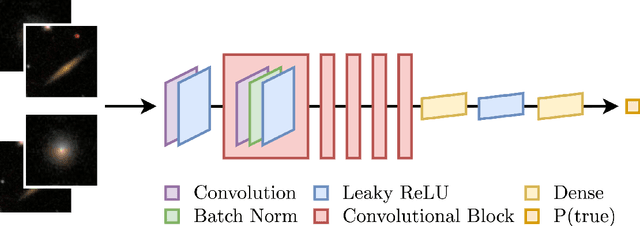
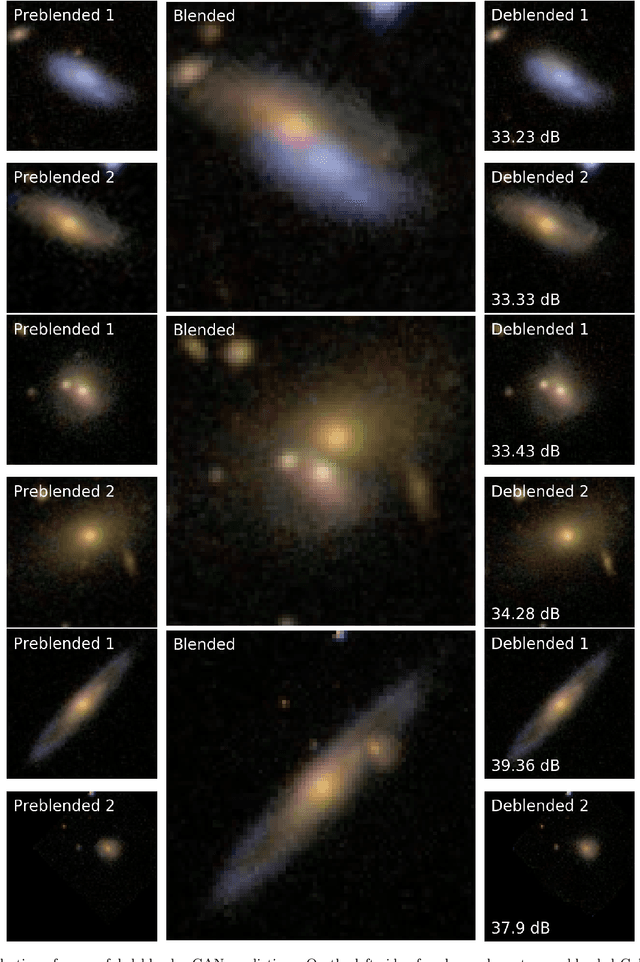
Abstract:Near-future large galaxy surveys will encounter blended galaxy images at a fraction of up to 50% in the densest regions of the universe. Current deblending techniques may segment the foreground galaxy while leaving missing pixel intensities in the background galaxy flux. The problem is compounded by the diffuse nature of galaxies in their outer regions, making segmentation significantly more difficult than in traditional object segmentation applications. We propose a novel branched generative adversarial network (GAN) to deblend overlapping galaxies, where the two branches produce images of the two deblended galaxies. We show that generative models are a powerful engine for deblending given their innate ability to infill missing pixel values occluded by the superposition. We maintain high peak signal-to-noise ratio and structural similarity scores with respect to ground truth images upon deblending. Our model also predicts near-instantaneously, making it a natural choice for the immense quantities of data soon to be created by large surveys such as LSST, Euclid and WFIRST.
 Add to Chrome
Add to Chrome Add to Firefox
Add to Firefox Add to Edge
Add to Edge